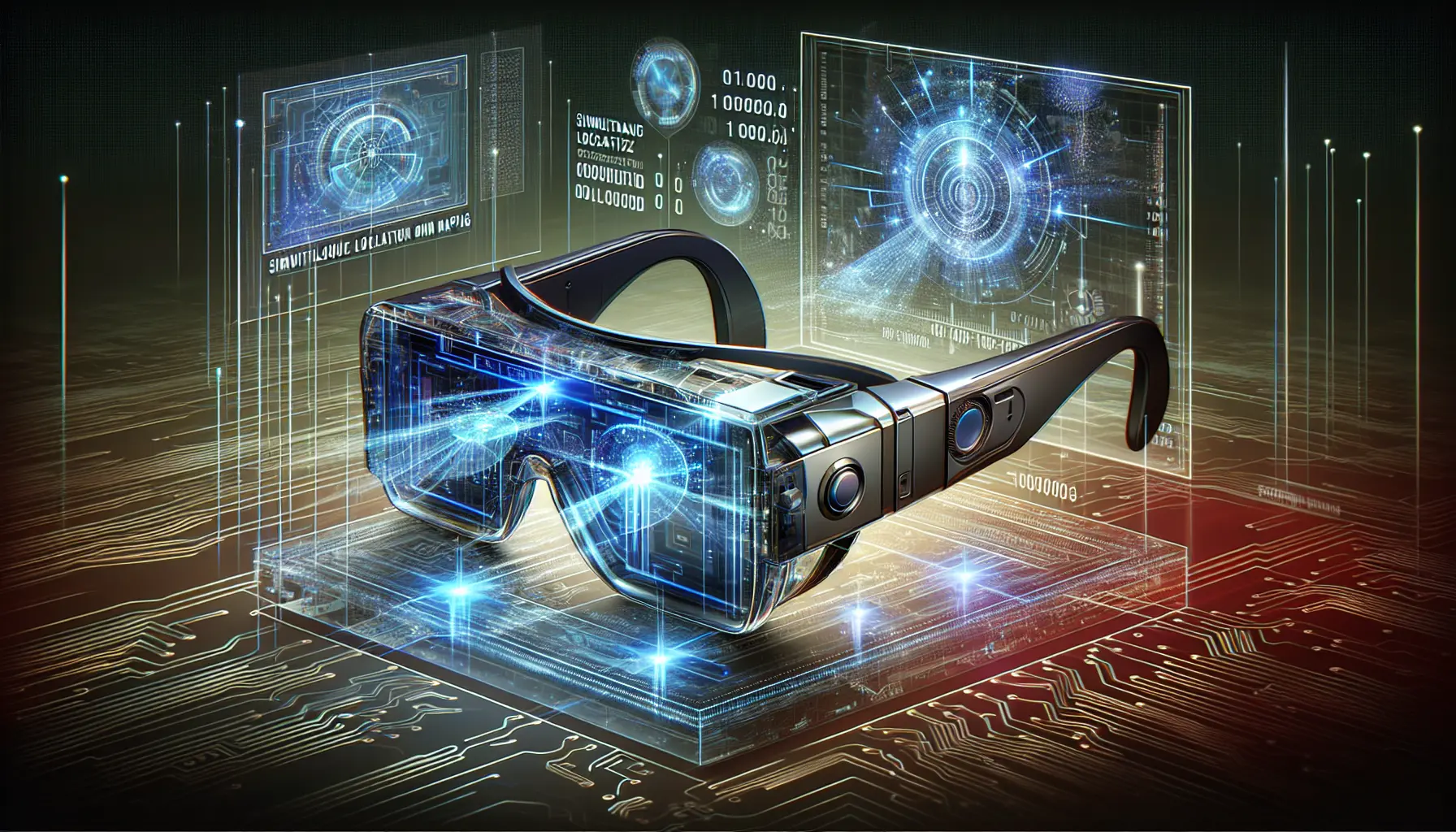
The Role of SLAM (Simultaneous Localization and Mapping) in AR Glasses
Category: Tech Deep Dive
Generated: 2025-04-06
Introduction to SLAM and AR Glasses
In the world of technology, Augmented Reality (AR) is a fascinating frontier that overlays digital content onto the real world, enhancing our perception of reality. As AR devices evolve, SLAM (Simultaneous Localization and Mapping) plays a pivotal role in making these experiences as seamless and immersive as possible. But what exactly is SLAM, and why is it crucial for AR glasses?
SLAM is a computational problem that allows a device to understand its environment in real-time by creating a map of its surroundings while simultaneously keeping track of its location within that map. For AR glasses, this means transforming the way these devices interact with the world, offering real-time feedback and interaction that feels natural and intuitive.
The Basics of SLAM Technology
To appreciate SLAM's impact on AR glasses, we must first understand its core principles. At its heart, SLAM involves two key components: Localization—determining the device's position relative to its environment, and Mapping—constructing a spatial representation of that environment.
There are various types of SLAM technologies, each suited to different applications. Visual SLAM uses cameras to capture the environment, while LiDAR-based SLAM employs laser sensors for high-precision mapping. Each type has its strengths, tailored to specific needs and constraints.
How SLAM Enhances AR Glasses
The integration of SLAM in AR glasses offers several enhancements:
- Real-time Environment Mapping: SLAM enables AR glasses to map their surroundings on the fly, providing a seamless and immersive AR experience.
- Accurate Localization: By accurately determining the user's position, AR glasses can offer precise overlays and interactions, enriching user engagement.
- Improved User Immersion: With SLAM, digital elements are more accurately anchored to the real world, enhancing user immersion and interaction.
SLAM Algorithms in AR Glasses
Various algorithms drive SLAM technology, each contributing to its efficiency and effectiveness. Extended Kalman Filter (EKF) and Graph-Based SLAM are among the popular algorithms used. These algorithms are often optimized for the compact and power-efficient architecture of AR glasses, ensuring smooth performance.
Successful implementations of SLAM in current AR devices demonstrate its potential. Brands like Microsoft and Apple have incorporated SLAM into their AR offerings, setting benchmarks in the industry.
Challenges of Integrating SLAM with AR Glasses
Despite its advantages, SLAM integration faces challenges:
- Processing Power and Energy: SLAM requires significant computing resources, posing a challenge for battery-operated AR glasses.
- Dynamic and Complex Environments: Handling rapidly changing environments can be difficult, as SLAM must adapt quickly to maintain accuracy.
- Indoor and Outdoor Limitations: Different lighting and surface conditions can affect SLAM's performance, requiring advanced solutions to maintain reliability.
Innovations and Future of SLAM in AR Glasses
The future of SLAM in AR glasses looks promising, with continuous advancements:
- AI and Machine Learning: These technologies are being integrated to enhance SLAM's accuracy and efficiency.
- Emerging Trends: Innovations such as edge computing and advanced sensor fusion are set to revolutionize SLAM applications.
These advancements not only promise to improve existing AR applications but also open up new possibilities for future innovations.
Real-World Applications of SLAM in AR Glasses
SLAM's impact is evident across various sectors:
- Gaming: AR games create immersive worlds that adapt to the player's environment.
- Education: Interactive learning experiences are enhanced with real-time AR overlays.
- Healthcare: AR glasses assist in surgeries and medical training by providing real-time data and visuals.
Companies like Magic Leap and Snap are successfully utilizing SLAM, paving the way for future applications that we can only begin to imagine.
Conclusion
SLAM technology is integral to the advancement of AR glasses, enhancing their functionality and user experience. As SLAM continues to evolve, its potential to transform AR technology is immense, promising a future where digital and physical worlds blend seamlessly.
Additional Resources
For those eager to dive deeper into SLAM and AR technologies, consider exploring the following resources:
- Recommended Readings: Check out "Probabilistic Robotics" by Sebastian Thrun for foundational insights.
- Online Courses: Platforms like Coursera offer comprehensive SLAM tutorials.
- Industry Conferences: Attend events such as the Augmented World Expo to stay updated on the latest trends.
Feel free to leave a comment or share your thoughts on SLAM's impact on AR technology. We’d love to hear from you!